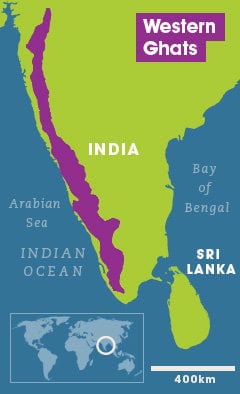By: Sandhya Sekar
Send to a friend
The details you provide on this page will not be used to send unsolicited email, and will not be sold to a 3rd party. See privacy policy.
India is currently debating the case for development in the Western Ghats, one of the world’s so-called ‘hottest biodiversity hotspots’. Over 4,000 flowering plants, more than 500 bird species, over 100 species of mammals and around 180 species of amphibians call this mountainous area their home.

But the Western Ghats is not a typical protected area. Areas of largely forested wilderness mesh with areas of human settlement with few detectable boundaries. Wild animals, including large and potentially dangerous predatory cats, roam villages on the forest fringes. They damage crops and livestock, creating conflict between endangered animals and affected people, mostly poor villagers.
Local people, who live at high densities just outside the protected areas, depend on the forests for survival. Forested areas also hold mining wealth and timber that companies and government agencies are keen to utilise, as well as water resources that could support intensive farming. India faces a tough task in trying to resolve these conflicts and maintain her forests.













